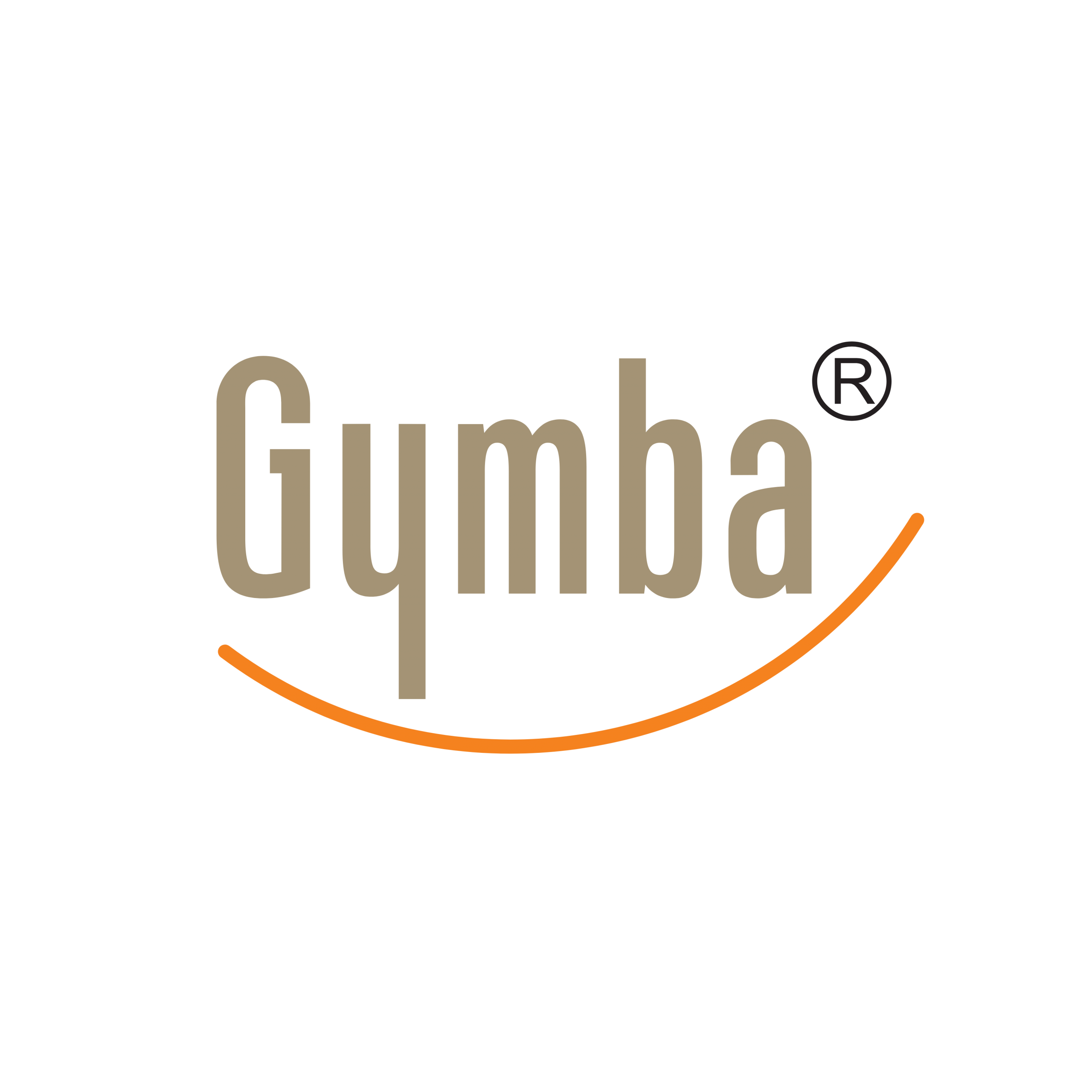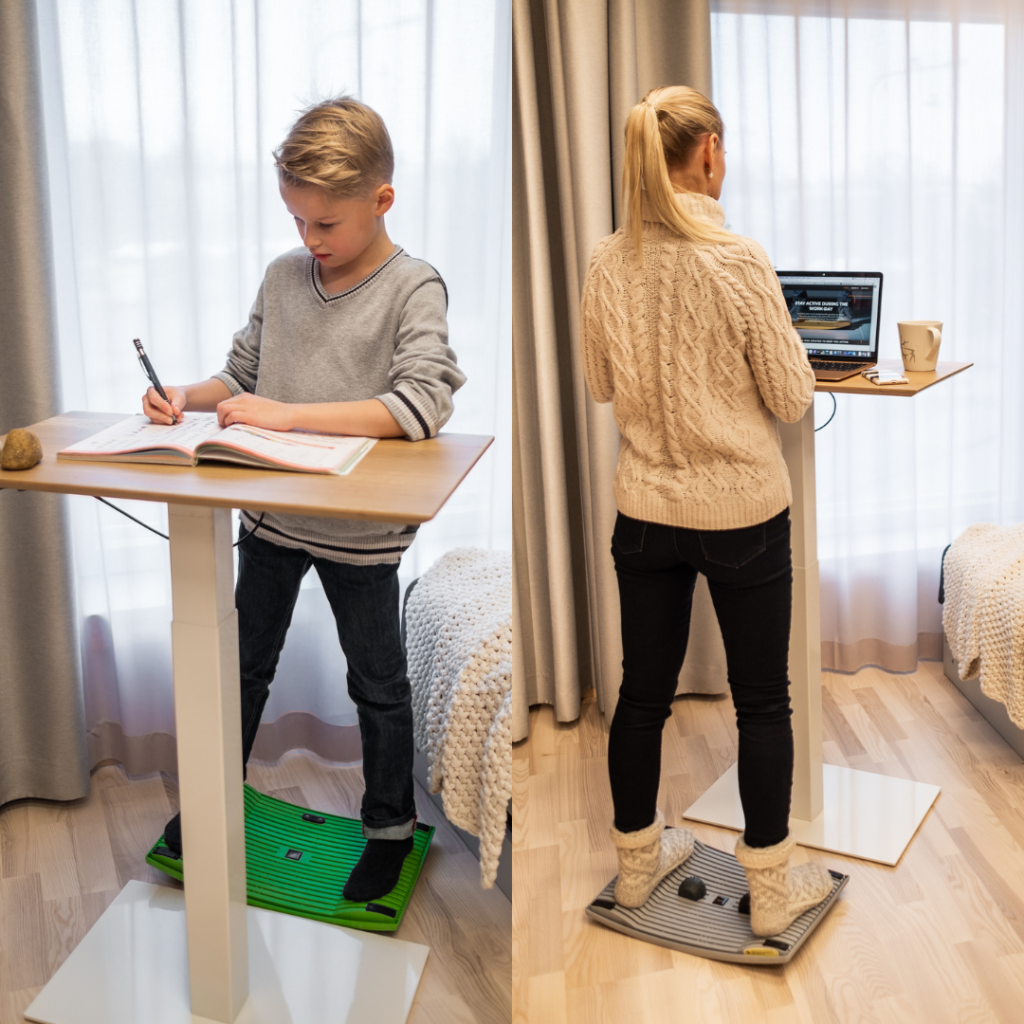A balance board is an ergonomic tool designed to encourage subtle movement while standing, featuring a platform that creates controlled instability. For students, balance boards offer significant benefits by reducing sedentary behaviour, improving posture, enhancing focus, and building core strength. These boards allow students to engage in gentle movement throughout the day, which can help channel restless energy productively while supporting physical development and cognitive function in educational environments. Balance boards integrate naturally with standing desks to create more dynamic learning spaces.
What is a balance board and why should students use one?
A balance board is an ergonomic device that creates a controlled wobbling effect when stood upon. The design encourages micro-movements as your body naturally works to maintain balance, engaging core muscles and promoting proper posture without disrupting your primary activities.
For students, balance boards offer a practical solution to the problems associated with prolonged sitting in traditional classroom settings. As educational approaches evolve, there’s growing recognition of the connection between physical movement and cognitive performance. Balance boards allow students to stand and move subtly while continuing to focus on their studies.
The key benefits for students include:
- Outlet for natural energy and fidgeting
- Improved blood circulation compared to sitting
- Enhanced focus through gentle movement
- Development of core stability and balance skills
- Promotion of better posture habits
Balance boards are particularly valuable in modern educational environments that increasingly recognise the importance of physical activity in learning processes, making them useful tools for classrooms, libraries, and home study areas.
How do balance boards improve student focus and concentration?
Balance boards improve student focus by harnessing the natural connection between physical movement and brain function. When students use a balance board, the subtle movements required to maintain balance stimulate the vestibular system, which directly impacts the brain’s attention regulation centres. This neurological relationship means that controlled movement can actually enhance rather than distract from cognitive processes.
The gentle motion helps redirect fidgeting energy that might otherwise manifest as classroom disruptions. Many students—particularly those with attention challenges—benefit from having an appropriate physical outlet while learning. The balance board provides this outlet without requiring students to leave their workstation or interrupt their studies.
Balance boards also promote increased blood flow throughout the body, including to the brain. This improved circulation delivers more oxygen and nutrients to brain cells, supporting optimal cognitive function. The result is often improved alertness and mental clarity during lessons and study sessions.
The level of engagement required to maintain balance on the board also creates just enough physical challenge to keep the brain alert without overwhelming it with distraction. This state of mild physical engagement can help maintain an optimal level of arousal for learning and information retention.
What physical benefits do balance boards offer to students?
Balance boards provide numerous physical advantages for students, with improved posture in the classroom being one of the most significant. When using a balance board, the body naturally aligns itself to maintain stability, encouraging proper spinal positioning and reducing the slouching commonly seen in traditional seated learning environments.
Core strength development occurs naturally as students use balance boards. The constant small adjustments required to stay balanced engage the deep abdominal, back, and pelvic muscles. This strengthening happens passively throughout the day, without requiring dedicated exercise time, which is particularly beneficial for students who may not participate in regular physical activities.
Additional physical benefits include:
- Enhanced proprioception (awareness of body position)
- Improved balance and coordination skills
- Reduced discomfort from static positions
- Better weight distribution and reduced pressure points
- Increased calorie expenditure compared to sitting
For growing bodies, these physical benefits are particularly valuable. The development of good postural habits and core stability during formative years can help prevent musculoskeletal issues later in life, while the increased movement throughout the day supports healthy physical development.
How can balance boards be incorporated into classroom settings?
Balance boards can be effectively incorporated into classrooms through several practical approaches. The most straightforward implementation is pairing balance boards with standing desks for active learning, creating designated standing workstations where students can alternate between sitting and standing throughout the day. This arrangement works well for both individual study periods and collaborative activities.
For classrooms with limited resources, a rotation system allows students to take turns using the available balance boards. This can be structured as timed intervals or based on specific activities where movement might be particularly beneficial. Teachers often find this approach helps maintain student focus across the entire class as students look forward to their turn.
Age-appropriate usage guidelines are important for successful implementation:
- Younger students (primary school): Shorter standing periods (10-15 minutes) with simpler balance board designs
- Older students (secondary school): Longer standing periods (up to 30 minutes) with more challenging balance options
- University students: Self-regulated usage based on personal comfort and focus needs
Many teachers create designated “movement zones” within the classroom where balance boards and other active equipment are available. These areas can be used during independent work times, allowing students to choose when movement would benefit their learning process. Clear expectations about appropriate use help ensure the equipment enhances rather than disrupts the learning environment.
Are balance boards suitable for students with different abilities?
Balance boards are adaptable for students with varying physical abilities and needs. Many models offer adjustable difficulty levels, allowing the amount of instability to be increased or decreased to match individual capabilities. This adaptability ensures that students can experience the benefits of movement regardless of their starting balance skill level.
For students with specific mobility considerations, certain balance board designs provide more stability while still encouraging beneficial micro-movements. Features such as textured surfaces, larger platforms, or adjustable bases make balance boards accessible to a wider range of users. Some students may initially need support, such as having a stable object nearby to hold if necessary.
Urheilupuolen tuotteemme inclusive benefits of balance boards extend beyond physical accessibility. Many students with sensory processing differences or attention challenges find that the controlled movement opportunity helps them regulate their sensory input and focus better on learning tasks. The freedom to move within appropriate parameters can be particularly valuable for these learners.
Schools implementing balance boards should consider providing options with different levels of challenge to accommodate the full spectrum of student abilities. This approach ensures that all students can participate and benefit from more active learning environments according to their individual needs and comfort levels.
What should you look for when choosing a balance board for students?
When selecting balance boards for educational settings, prioritise safety features and appropriate stability levels. Look for boards with non-slip surfaces and rounded edges to prevent accidents. The degree of instability should match the age and experience level of the students who will be using them—younger students typically benefit from more stable designs that allow controlled movement without excessive challenge.
Durability is essential for classroom use, as balance boards will experience frequent and sometimes unpredictable use. High-quality materials and solid construction ensure longevity and safer usage. Additionally, consider noise factors—some balance board designs create more sound than others when in use, which could potentially disrupt the learning environment.
Size and portability are practical considerations for educational settings. Balance boards should be:
- Appropriately sized for student shoe sizes and heights
- Lightweight enough to move between workstations if needed
- Compact enough for storage when not in use
- Suitable for use with existing desks or tables
Balance boards represent a valuable tool for creating more active learning environments that support both physical well-being and cognitive development. By incorporating appropriate movement opportunities into educational settings, we can help students develop healthier habits while potentially enhancing their learning experience. When considering ergonomic solutions for educational settings, look for ergonomic laptop stands for students specifically designed with students’ unique needs in mind.

